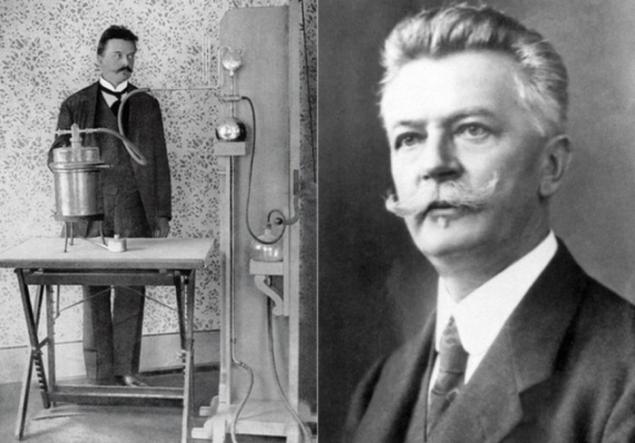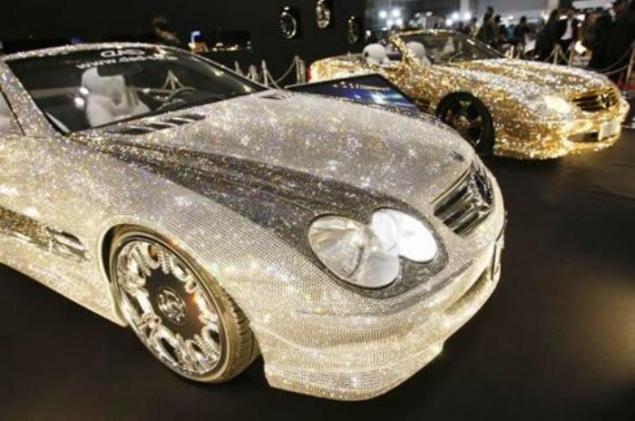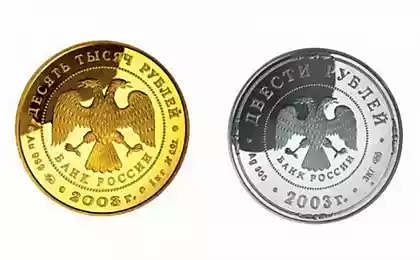526
Daniel Swarovski — an enterprising fraudster or a brilliant engineer?
To create artificial diamonds can be treated in different ways: either to call fraud and counterfeiting of gemstones or consider it art simulation, allowing you to save on decorations. Both allegations equally true. Daniel Swarovski, whose birthday is the 24th of October marks 154 years, called and a sly con man, and master of illusions, and jewelry master. One fact is indisputable: no matter how called the business of Daniel Swarovski, he managed to turn his company into the world's principal producer of crystals.

The source of the photos: Kulturologia.ruthe Website publishes a fascinating article about how he did it.

Of course, Daniel Swarovski was not the first person who came up with the idea to forge gems. Since ancient times, it was illegal lucrative business. Famous con man, in the XVIII century earning the counterfeiting was Georges Frederic Strass. In honor of his artificial diamonds were called rhinestones, but at that time it was considered an adventurer. But Daniel Swarovski became the first who managed a fake to turn into a fashion trend.

The main reason why Swarovski can not be considered a cheater, is that he never hid the fact of forgery, and did not enter people astray. The creation of artificial diamonds, he was called a simulation. Swarovski not only made the ladies to wear artificial jewelry, but convinced them that it is fashionable and prestigious.

Occupation crystallized was it predetermined from birth: he was born in 1862 in Northern Bohemia, which from the XVIII century was famous for its Bohemian glass. The main occupation there was the glassworks, there was such, and the father of Daniel — there's manufactured jewelry for retailers. Big profits this enterprise did not bring. Daniel had not intended to continue his father's work — he dreamed of a future violinist and seriously studied music. Soon, for unknown reasons, he left his studies and went to Paris to study engineering.

Crucial to the success of the future enterprise was the passion of Daniel electrical engineering and designing electrical appliances. In 1883 he visited the First electrical exhibition in Vienna, where he came up with the idea of using electric current for grinding glass. For the invention and testing of the new tool took about 10 years, and in 1892, Swarovski received a patent for an electric grinder, with which you can quickly and efficiently handle the crystal, allowing the production of artificial diamonds became popular.

Swarovski did not return to Bohemia — the competition in the glass industry there, and so was too high, he settled in the Austrian village of Wattens. Buying a dilapidated factory, Daniel opened a factory producing crystal products. No one could have imagined that a small village would become in later years the crystal Empire and a tourist Mecca.


Trade quickly developed. In 1900, Daniel expanded the room, employed 200 workers and named the company "Swarovski" — under this name it was known until now. The main know-how of the master — not even the technology of polishing the crystal, and the secret formula for the composition of the initial mixtures used for manufacturing. That is why the Swarovski crystals were marked by unusual clarity and brilliance. This formula is still kept in the strictest confidence.

Daniel Swarovski became the ancestor of the era of fashion jewelry and mass production of artificial diamonds. In the early twentieth century fashionista is no longer considered shameful to wear "fakes". Besides Coco Chanel and Elsa Schiaparelli used the jewelry in their collections. Coco Chanel claimed: "Imitation is the most honest form of flattery. Jewelry should be a lot, but if they are true — it smacks of ostentation and bad taste".

Since then, the jewelry was no longer considered in bad taste even in the Royal courts. The notion of "elite jewelry" crystallized and became a major producer. And engineering talent of Daniel carried him through two wars and did not fail. When in the years of the global demand for jewelry fell, Swarovski started making tools and abrasive materials for grinding and cutting machines.



The founder of the crystal Empire died in 1956, at the age of 94 years, and his work was continued by children and grandchildren. She began to produce colored crystals, pendants for chandeliers, crystal souvenir figurines and even took crystal tuning cars.



via www.kulturologia.ru/blogs/241016/31935/

The source of the photos: Kulturologia.ruthe Website publishes a fascinating article about how he did it.

Of course, Daniel Swarovski was not the first person who came up with the idea to forge gems. Since ancient times, it was illegal lucrative business. Famous con man, in the XVIII century earning the counterfeiting was Georges Frederic Strass. In honor of his artificial diamonds were called rhinestones, but at that time it was considered an adventurer. But Daniel Swarovski became the first who managed a fake to turn into a fashion trend.

The main reason why Swarovski can not be considered a cheater, is that he never hid the fact of forgery, and did not enter people astray. The creation of artificial diamonds, he was called a simulation. Swarovski not only made the ladies to wear artificial jewelry, but convinced them that it is fashionable and prestigious.

Occupation crystallized was it predetermined from birth: he was born in 1862 in Northern Bohemia, which from the XVIII century was famous for its Bohemian glass. The main occupation there was the glassworks, there was such, and the father of Daniel — there's manufactured jewelry for retailers. Big profits this enterprise did not bring. Daniel had not intended to continue his father's work — he dreamed of a future violinist and seriously studied music. Soon, for unknown reasons, he left his studies and went to Paris to study engineering.

Crucial to the success of the future enterprise was the passion of Daniel electrical engineering and designing electrical appliances. In 1883 he visited the First electrical exhibition in Vienna, where he came up with the idea of using electric current for grinding glass. For the invention and testing of the new tool took about 10 years, and in 1892, Swarovski received a patent for an electric grinder, with which you can quickly and efficiently handle the crystal, allowing the production of artificial diamonds became popular.

Swarovski did not return to Bohemia — the competition in the glass industry there, and so was too high, he settled in the Austrian village of Wattens. Buying a dilapidated factory, Daniel opened a factory producing crystal products. No one could have imagined that a small village would become in later years the crystal Empire and a tourist Mecca.


Trade quickly developed. In 1900, Daniel expanded the room, employed 200 workers and named the company "Swarovski" — under this name it was known until now. The main know-how of the master — not even the technology of polishing the crystal, and the secret formula for the composition of the initial mixtures used for manufacturing. That is why the Swarovski crystals were marked by unusual clarity and brilliance. This formula is still kept in the strictest confidence.

Daniel Swarovski became the ancestor of the era of fashion jewelry and mass production of artificial diamonds. In the early twentieth century fashionista is no longer considered shameful to wear "fakes". Besides Coco Chanel and Elsa Schiaparelli used the jewelry in their collections. Coco Chanel claimed: "Imitation is the most honest form of flattery. Jewelry should be a lot, but if they are true — it smacks of ostentation and bad taste".

Since then, the jewelry was no longer considered in bad taste even in the Royal courts. The notion of "elite jewelry" crystallized and became a major producer. And engineering talent of Daniel carried him through two wars and did not fail. When in the years of the global demand for jewelry fell, Swarovski started making tools and abrasive materials for grinding and cutting machines.



The founder of the crystal Empire died in 1956, at the age of 94 years, and his work was continued by children and grandchildren. She began to produce colored crystals, pendants for chandeliers, crystal souvenir figurines and even took crystal tuning cars.



via www.kulturologia.ru/blogs/241016/31935/























